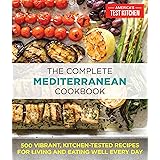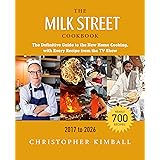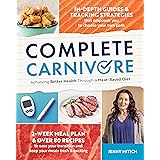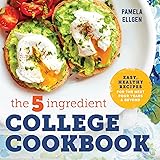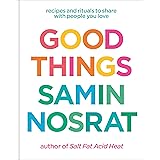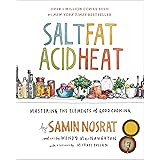Chronic conditions affect millions globally. Many people seek natural approaches for health improvement. Food choices often play a crucial role in well-being. The video above introduces Dr. Sebi’s complete recommended food list. It also shares practical meal plan ideas. This nutritional guide offers a path toward vibrant health. It focuses on alkaline, plant-based foods.
The Dr. Sebi alkaline diet is more than just a list. It is a philosophy. It emphasizes nutrient-dense foods. These choices are said to cleanse and revitalize the body. This approach aims to restore the body’s natural balance. It works by reducing acidity and inflammation. Understanding these principles is a first step. It helps in adopting this healing lifestyle.
Understanding the Dr. Sebi Food List
Dr. Sebi’s recommendations center on specific natural foods. These are believed to be compatible with human cellular structure. The diet focuses on consuming electric foods. These foods are considered alkaline. They support the body’s self-healing mechanisms. Processed foods are strictly avoided. Animal products are also excluded. This detailed list provides clear guidance. It helps individuals nourish their bodies effectively.
The Seven Core Categories of Dr. Sebi’s Food List
The diet organizes foods into seven key categories. Each category offers vital nutrients. Together, they form a comprehensive eating plan. Let us explore each section. You will find specific items to include.
Vegetables: Nature’s Cleansers
This category has the most variety. Vegetables are foundational. They provide essential vitamins and minerals. These foods help hydrate the body. They also support detoxification. Including a wide range of these items is encouraged. They offer diverse health benefits.
- Amaranth greens (Callaloo)
- Wild Arugula
- Avocado
- Bell Peppers
- Chayote (Mexican Squash)
- Cucumber
- Dandelion greens
- Garbanzo beans
- Izote (cactus flower/leaf)
- Kale
- All lettuce (except Iceberg)
- All mushrooms (except Shiitake)
- Nopales (Mexican Cactus)
- Okra
- Olives
- Onions
- Sea Vegetables (wakame, dulse, arame, hijiki, nori)
- Squash
- Tomato (cherry and plum only)
- Tomatillo
- Turnip greens
- Zucchini
- Watercress
- Purslane (Verdaloga)
These vegetables are packed with chlorophyll. This compound is known for its cleansing properties. For example, dandelion greens support liver health. Sea vegetables offer unique minerals. They are often missing in modern diets. Avocados provide healthy fats. They are essential for nutrient absorption.
Fruits: Sweetness and Hydration
Fruits are vital for hydration. They provide natural sugars and antioxidants. The emphasis is on seeded fruits. Genetically modified or man-made fruits are excluded. This distinction is important for cellular health. Seeded fruits are believed to carry more life force.
- Apples
- Bananas (smallest varieties preferred)
- Berries (all varieties except cranberries)
- Elderberries (any form)
- Cantaloupe
- Cherries
- Currants
- Dates
- Figs
- Grapes (seeded)
- Limes (key limes preferred, with seeds)
- Mango
- Melons (seeded)
- Oranges (Seville or sour preferred)
- Papayas
- Peaches
- Pears
- Plums
- Prickly Pear (cactus fruit)
- Prunes
- Raisins (seeded)
- Soft Jelly Coconuts
- Soursops (found in Latin or West Indian markets)
- Tamarind
The exclusion of cranberries is specifically mentioned. They are considered genetically modified. Bananas should be smaller types. This indicates a preference for less hybridized varieties. Grapes, especially seeded ones, are highlighted. They are often used in powerful detox fasts. Mangoes and papayas are known for digestive support. They contain natural enzymes.
All-Natural Herbal Teas: Warming and Soothing
Herbal teas offer warmth and therapeutic benefits. They are particularly comforting in colder months. These teas support various bodily functions. They can aid digestion and relaxation. They also contribute to hydration.
- Burdock
- Chamomile
- Elderberry
- Fennel
- Ginger
- Raspberry
- Tila
Burdock tea is known for blood purification. Chamomile helps with relaxation. Ginger aids digestion and reduces inflammation. Elderberry boosts immune function. These teas are excellent ways to consume beneficial herbs. They provide gentle yet effective support.
Grains: Wholesome and Nourishing
Specific grains are permitted. They provide sustained energy. These grains are chosen for their alkaline properties. They offer complex carbohydrates and fiber. They differ from commonly consumed acidic grains.
- Amaranth
- Fonio
- Kamut
- Quinoa
- Rye
- Spelt
- Teff
- Wild Rice
Kamut and spelt are ancient grains. They are highly valued. Quinoa is a complete protein source. Wild rice adds a unique nutritional profile. These grains are versatile. They can be used in many alkaline recipes. A spelt flatbread, for example, can be made. It allows for Dr. Sebi approved pizzas.
Nuts and Seeds: Essential Fats and Proteins
This category is very limited. It focuses on specific healthy fats and proteins. Many common nuts and seeds are excluded. This is an important distinction. The approved options provide vital nutrients. They support brain health and energy.
- Hempseed
- Raw Sesame Seeds
- Raw Sesame “Tahini” Butter
- Walnuts
- Brazil Nuts
Almonds, peanuts, and cashews are not on the list. This reflects the diet’s strict criteria. Hempseeds are a complete protein source. Walnuts are rich in Omega-3 fatty acids. Raw tahini is made from sesame seeds. It offers calcium and healthy fats.
Oils: Cooking Wisely
Oils are crucial for cooking and dressings. However, their use requires careful attention. Smoke points are critically important. Cooking oils past their smoke point damages them. This process can create harmful compounds. These compounds cause acidosis and inflammation. The recommended oils have specific uses.
- Olive Oil (do not cook, low smoke point)
- Coconut Oil (do not cook, low smoke point)
- Grapeseed Oil (higher smoke point, can cook with)
- Sesame Oil (can cook with)
- Hempseed Oil (can cook with)
- Avocado Oil (can cook with)
Olive oil and coconut oil are best used raw. They are good for dressings or finishing dishes. Grapeseed oil, sesame oil, hempseed oil, and avocado oil are heat stable. They are suitable for cooking. This helps prevent the formation of inflammatory compounds. Avoiding damaged oils is key for health.
Spices and Seasonings: Flavorful Additions
Flavor is important for enjoyable eating. This category is divided into four sub-sections. These natural additions enhance taste. They do so without compromising health. They replace conventional salts and sugars.
Mild Flavors:
- Basil
- Bay leaf
- Cloves
- Dill
- Oregano
- Savory
- Sweet Basil
- Tarragon
- Thyme
Pungent and Spicy Flavors:
- Achiote
- Cayenne/African Bird Pepper
- Onion Powder
- Habanero
- Sage
Salty Flavors:
- Pure Sea Salt (Celtic or Himalayan)
- Powdered Granulated Seaweed (Kelp, Dulse, Nori)
Sweet Flavors:
- Pure Agave Syrup (from cactus)
- Date Sugar
Seaweed powders are excellent salt alternatives. They add a savory, umami flavor. Agave syrup and date sugar are natural sweeteners. They are preferred over refined sugars. These options allow for creative and delicious cooking. They support an alkaline lifestyle.
Crafting Your Dr. Sebi Meal Plan
Meal planning adapts to individual health goals. The intensity of detox varies. This depends on your desired healing speed. Different levels of commitment yield different results. From aggressive to mild, there is a plan for everyone.
Tailoring Your Detox Journey
Healing severe ailments requires a focused approach. If addressing cysts, tumors, or autoimmune diseases, an aggressive plan is beneficial. Less severe goals allow for a more moderate approach. Even mild changes can improve health. Understanding your goals guides your choices.
Aggressive Detox: Mono-Fruit Fasts and Raw Fruit Diet
For rapid healing, a strict fruit-only diet is often recommended. This approach maximizes cellular hydration. It supports efficient toxin removal. Fruit is highly nutritive. It aids in tissue restoration and regeneration. The speaker shared results from a 10-day mono grape fast. This resulted in significant mucus elimination. Lymph nodes behind the ears also shrunk. This highlights the power of such focused detoxes.
A mono-diet involves eating only one type of fruit. Seeded grapes are a popular choice. This intense method cleanses the body deeply. Less extreme, but still powerful, is an all-raw fruit diet. Any allowed fruit can be consumed. Sweet fruits like bananas, figs, and dates can slow detox slightly. Yet, they remain far more beneficial than cooked foods. Pairing these with Dr. Sebi’s herbal detox packages amplifies results.
Moderate Detox: Raw Vegetables and Fruits
Adding raw vegetables introduces more variety. This plan still detoxes quite quickly. It starts the day with fruit. Fruit can be eaten for breakfast and lunch. Snacks can also be fruit-based. Dinner might feature a large raw salad. This includes many healthy greens. An avocado-based dressing adds flavor and healthy fats. Such a dressing recipe is simple to make. It offers delicious, Sebi-approved flavor.
Mild Detox: Steamed Vegetables with Grains, Nuts, and Seeds
This level is less intense than raw food diets. It still promotes significant healing. Always start the day with fruit. Lunch can be more fruit or a salad. Dinner includes steamed vegetables. Cooking without oil is important. Steaming preserves nutrients better. No salt is added for optimal detox. Later, allowed oils and fats can be introduced. Grains, nuts, and seeds can be added. This slows detoxification somewhat. However, it is vastly superior to a standard diet. This approach offers sustained health benefits. It is a powerful way to heal. Especially when combined with Dr. Sebi’s herbs. Recipes for spelt flatbreads are available. These can make Sebi-approved pizzas. Raw nori wraps with avocado and hummus are also great options. These ideas inspire diverse meal choices.



